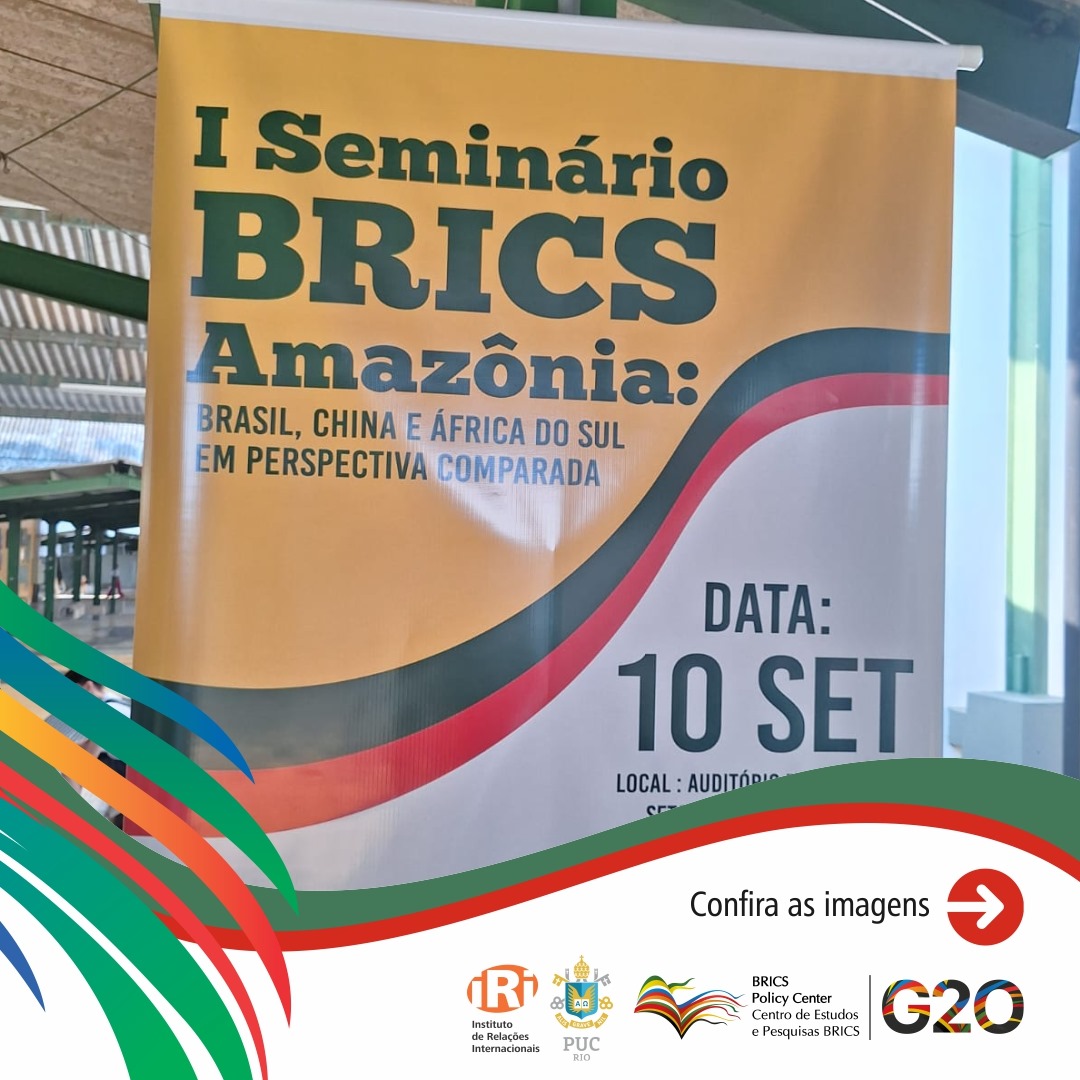
Manaus Field Trip Notes, September 8 to 13 2024 by researchers Ana Garcia, Lisa Thompson and Cleiton Maciel Britos
1. Introduction: Discussion on the History of the Manaus Special Economic Zone in the context of BRICS and China’s Economic Expansion
The Brics Policy Centre (BPC) Field-trip to Manaus on the part of Professors Ana Garcia and Lisa Thompson was part of the project “Political Economy of South-South Relations”, funded by the Carlos Chagas Foundation for Research Suport of the state of Rio de Janeiro (FAPERJ) and the Karibu Foundation. It entailed a high-level seminar held at Manaus University, on the 10th of September. The seminar was organised by Professor Cleiton Maciel on behalf of the BPC, together with the Sociology and Anthropology departments. The seminar raised many important discussion points. Perhaps one of the most interesting points from a comparative perspective on SEZs, is the increasing success of the SEZ, despite a history demonstrating the zone has not always been as well managed policy wise. The strength of Brazilian Federal Policy Legislation to the smooth running of the SEZ is a major finding, across the week’s activities..
The seminar started by contextualising the SEZs existence in Manaus City, and some of the issues around it’s functioning. In terms of the contributions made by the BPC team, some of the main points raised, focus in various ways on the rising geostrategic role of China in the re-imagining the New Global South, with China as the hegemonic epi-centre. Forging new patterns of development assistance and trade ties is a fundamental part of this shift, which is gaining greater significance now, both in Africa and in Latin-America. The importance of the Belt and Road Initiative in rewiring trade routes in both Africa and in South America is also increasingly in the forefront of the discussion. For example, of key significance to the Manaus SEZ is the opening of the Chancay Port in Peru, funded by the Chinese as part of the BRI.
In their presentations, Professor Garcia spent a good deal of time explaining BRICS and it’s geo-strategic importance in the light of China’s expanding economic footprint in Brazil. Professor Thompson linked this discussion on BRICS and the Global South to the expansion of special economic zones as a form of economic foreign-policy export on the part of China, referring to the South African and African context. The Chinese run Musina-Makhado SEZ is of particular significance in this regard, and is a foci of this research, together with policy comparisons to the running of the Manaus SEZ.
Professor Maciel, in his presentation, spent some time explaining the nuances of Chinese capitalist production within the Manaus SEZ. Professor Maciel’s insights into how to Chinese capital operates differently in the zone to other forms of capital, makes for interesting terms of comparison. However, Professor Maciel also emphased, one of the major successes of the Manaus zone is that it is well managed at Federal State Level, and strict production, resource and labour regulations exist to make sure that foreign capital is well regulated to provide value added to the Brazilian economy.
A number of policies govern the ways in which the Zone operates. For example there is legislation on minimum local input requirements, which range from the use of local components, to the use of local labour on the shop and factory floor. These regulations clearly make an enormous difference to the functionality of the zone in terms of the Brazilian economy. Professor Thompson pointed out that a criticism of Zones in South Africa is that at national level, FDI norms and standards are not codified and legalised as regulations. As a result there is concern within labour and civil society organisations over what happens in the SEZs with regards to the use of local resources and labour.
The seminar continued in the afternoon with a discussion with students about the Manaus SEZ and its significance economically. The discussions were aimed at assisting students to dig a little deeper into the case study and perhaps to consider using the methods used for studying the Zones in their own research.
2. Fieldwork in the Manaus SEZ
For the rest of the week, Professors Garcia, Thompson and Maciel conducted fieldwork within the zone. Interviews took place on Wednesday the 11th at the company GREE, an air-conditioning manufacturer. Interviews were conducted with management, and tours of the shopfloor and assembly lines were completed. It was gratifying to see the integration of Federal Policy into the policy management of the SEZ. For example, all staff on the shopfloor, and in the assembly line are Brazilian. This is far from the case in South Africa. Furthermore, local components are used for the assembly of the air-conditioners. Some components are made locally with raw materials imported from China. The GREE manufacturer example demonstrates the benefits of regulation on the part of the state in controlling foreign direct investment.
On Thursday, the 12th of September, Professors Garcia, Thompson and Maciel met with the Chief Superintendent of the Manaus SEZ. Discussions were wide ranging, but of the key take-home points, once again, is the careful regulation on of the SEZ on the part of the Brazilian Federal government. This regulation is ongoing continuously. Many of the issues that bedevil Foreign Direct Investment in Africa could be managed in a similar way with stronger policies and regulations, specifically on local labour, local components and resource use, and local chemical beneficiation.
In brief summary, the field trip yielded very constructive insights into the ways in which Special Economic Zones can be effectively managed by National/Federal policies. Further research into these policies at their formulation, legislation and application would be of great usefulness in relation to the widespread impact of SEZs mimicking the Chinese model throughout the developing world.


